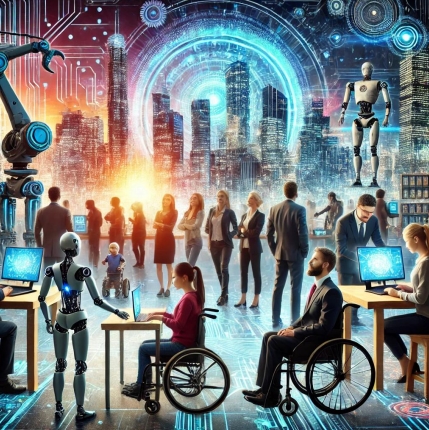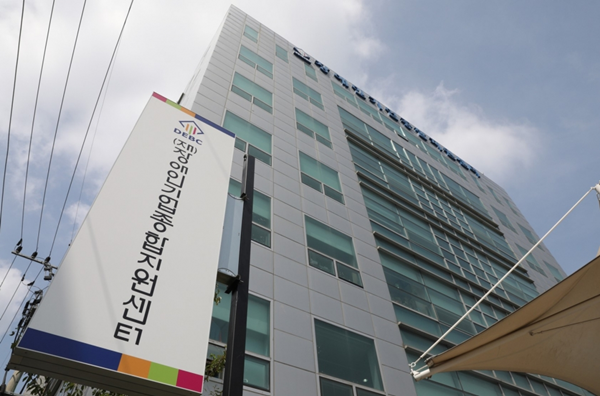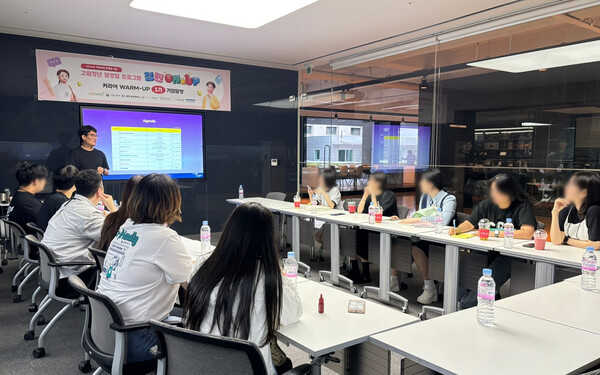1. The 4th Industrial Revolution and the employment status of the disabled in Korea
Is the 4th Industrial Revolution an opportunity or a challenge for people with disabilities? Since discussions began on the great changes in the economy, culture, society, and technology resulting from the Fourth Industrial Revolution at the World Economic Forum (WEF) held in Davos in 2016, the current era of the Fourth Industrial Revolution has exceeded our expectations. Technology is advancing at a much faster rate.
The convergence of innovative technologies such as artificial intelligence (AI), Internet of Things (IoT), big data, and blockchain is leading to fundamental changes in the labor market, leading to an era in which human labor may no longer be essential. These technological innovations open up new possibilities, but at the same time, they also raise concerns about job loss.
(…)
According to the Ministry of Employment and Labor, the number of working-age people with disabilities will decrease from 1.19 million in 2022 to 920,000 in 2030, and the proportion of people with developmental disabilities among the working-age disabled population is expected to increase from 17.3% to 25.2% during the same period. Accordingly, the Ministry of Employment and Labor judged that it was difficult to effectively respond to changes caused by technological development with traditional policy measures such as mandatory employment rate and levies alone.
Therefore, in May 2023, the ‘6th Basic Plan for Employment Promotion of the Disabled (2023-2027)’ was announced to be promoted over the next five years, promising to provide more ‘comprehensive’ support to the disabled. Under the vision of “a labor market where all people with disabilities work in the jobs they want,” four major tasks were included: ▲Supporting the clear implementation of employment obligations for people with disabilities ▲Strengthening active labor market policies for people with disabilities ▲Creating a workplace where people with disabilities are comfortable to work ▲Employing new people with disabilities Expanding ways to contribute.
(…)
4. Employment policy direction for the disabled in the era of the 4th Industrial Revolution
In the work environment, cases where disability has a positive effect on employment can vary greatly depending on the individual’s characteristics and type of disability. However, the strengths of certain disabilities, such as the ability to concentrate on simple and repetitive tasks, are likely to be fully utilized in new industries emerging from the Fourth Industrial Revolution.
Additionally, hiring people with disabilities can directly or indirectly contribute to companies developing products and services that reflect the needs of various classes. This not only helps create a corporate culture of diversity, but also has a positive impact on realizing social responsibility and strengthening brand image.
On the other hand, one of the major weaknesses of people with disabilities is that they have difficulty adapting to rapid changes in the work environment, such as the introduction of new technology. These difficulties are not simply due to the disability itself, but are the result of a variety of factors, including lack of education and vocational training and limited access to technology. This can be seen as a problem arising from the weak human resource status of people with disabilities. To overcome these problems, we propose the following practical improvement measures.
In the era of the 4th Industrial Revolution, the role of the government and companies in hiring people with disabilities will be even more important. To ensure that disabled people are not marginalized in a changing environment where technology is becoming more advanced, the paradigm should be implemented in parallel with employment support policies rather than focusing only on employment obligations.
Efforts are needed to expand the employment infrastructure for the disabled in relation to the 4th Industrial Revolution, such as nurturing the disabled workforce needed by companies and strengthening vocational rehabilitation services. In the labor market, excellent examples of employment of the disabled in a reciprocal rather than discriminatory manner are spreading. It is necessary to create an atmosphere in which other companies can voluntarily join in.
*Please note this is a Korean article
Source: Able News




